Why breathing through your mouth is bad for your health?
It all starts with your tongue! Tongue posture and breathing pattern.
-
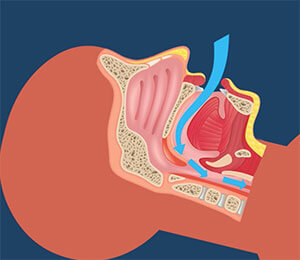
In mouth breathing the tongue sits low in order to allow for the passage of the air to the lungs through the mouth. This results in air turbulence during sleep and causes snoring. Furthermore, since the tongue sits low, it can fall backwards during sleep and partially or completely block the airways, resulting in sleep apnea.
-
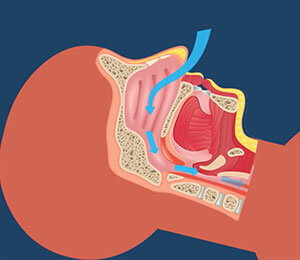
On the other hand, when the tongue rests against the roof of the mouth it blocks the oral air passage to prevent breathing through the mouth and promotes nasal breathing. The elevated tongue posture also prevents the tongue from falling back during sleep to block the airways.
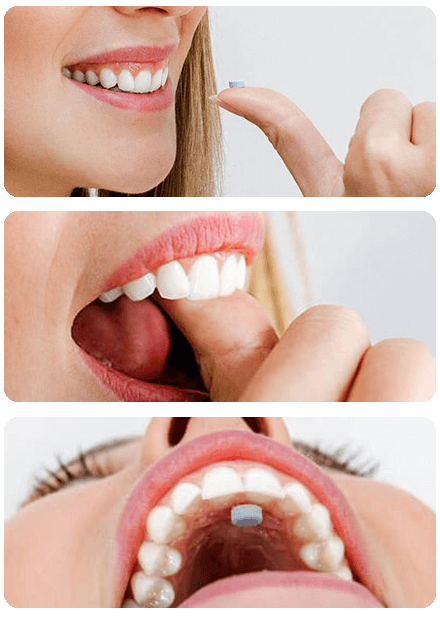
How can myospots train you to breathe through your nose?
- Myospots are small, dissolvable, adhesive pads that adhere easily to the roof of the mouth by gently forcing them with your thumb against the hard palate (2-3 mm behind the two front teeth).
- Once adhered, the spot stimulates your tongue involuntarily and unconsciously to elevate and touch it. It acts therefore as a tool to GUIDE and REMIND your tongue. It GUIDES the tongue to the correct spot (where it needs to elevate and rest on the roof of the mouth) and it also REMINDS the tongue to keep elevating until the spot is completely dissolved under the effect of saliva.
- Each spot takes 45-50 min to dissolve completely, providing almost 1 hour of extensive tongue exercise with each spot.
- Using 2-3 spots every day for 8 to 10 weeks helps in creating a tongue elevation habit that is associated with a lip seal and nasal breathing.
- Furthermore, the gentle pressure exerted by the tongue on the surface of the hard palate provides good resistance exercise that results overtime in increasing tongue muscles strength.
- This tongue strength is needed to maintain normal swallowing and speech functions and to maintain patent airways while awake and asleep.
- The gentle pressure exerted by the tongue while resting on the palate induces the natural expansion of the maxilla, particularly in young children.
Please note the following when attaching the spot to the roof of your mouth:
Myospots are not sticky and this is why they do not stick to each other in the container or to your fingers when you hold them. Myospots are made of hygroscopic materials that tend to absorb moisture quickly from the surroundings, this is how it adheres to the palate, since it sticks easily to wet surfaces under the moisture effect.
If the roof of the mouth is too dry (which is the usual case in chronic mouth breathers) the spot will not adhere easily. If you find it difficult to adhere the spot to the roof of your mouth, please try the following: take a sip of water before using the spot, and moisten the roof of your mouth with the tip of the tongue for a few seconds, then apply the spot. If your child is the one who is doing the exercise, make sure when they start elevating the tongue not to force the spot off, but to press over it with tongue surface.
FAQs
Why is mouth breathing bad?
Mouth breathing can cause a range of worrying symptoms from snoring to sleep apnea, tonsilitis, bad breath and gum disease.
How does it help?
Myospots are a unique and popular new tool for tongue elevation exercises that can treat mouth breathing fast. Myospots can help improve the following range of conditions:
https://www.healthline.com/health/mouth-breathing
- Mouth Breathing
- Snoring
- Sleep Apnea
- Bad Night’s Sleep
- Tongue Thrust
- Tongue Tie (post-surgery rehab)
- Dysphagia
- Digit Sucking in kids
- Speech Disorders
Does it permanently fix mouth breathing?
Using Myospots 2-3 times daily for a minimum of 3 months is enough to create a long-lasting habit of nasal breathing. However, the tongue is a muscle, and like any other muscle, it needs to exercise occasionally to maintain muscle strength. Therefore, after the initial treatment period, we recommend using Myospots once every day or every second day in order to maintain tongue strength and tongue elevation habit.
How is tongue exercise related to breathing?
Breathing should normally take place through nasal passages, but to have this happen, you need to have a lip-seal habit. This is where the tongue becomes important because if your tongue is in the correct elevated position, it will rest on the roof of the mouth. There it will block the oral airways and make it impossible to breathe through your mouth. This automatically encourages nasal breathing and trains your lips to come together to have a lip-seal. On the other hand, if your tongue is used to resting low in your mouth, there is a high chance for your lips to open and for air to flow through the oral airways, which can lead to a habit of mouth breathing. Retraining your tongue to elevate and rest on the roof of the mouth helps in changing the tongue posture and the creation of a nasal breathing habit that lasts while both awake and asleep.
But Myospots Now
-
 Myospots In 3 Flavour BundleMyospots In 3 Flavour Bundle
Myospots In 3 Flavour BundleMyospots In 3 Flavour Bundle- Regular price
-
$145.00 AUD - Regular price
-
- Sale price
-
$145.00 AUD
-
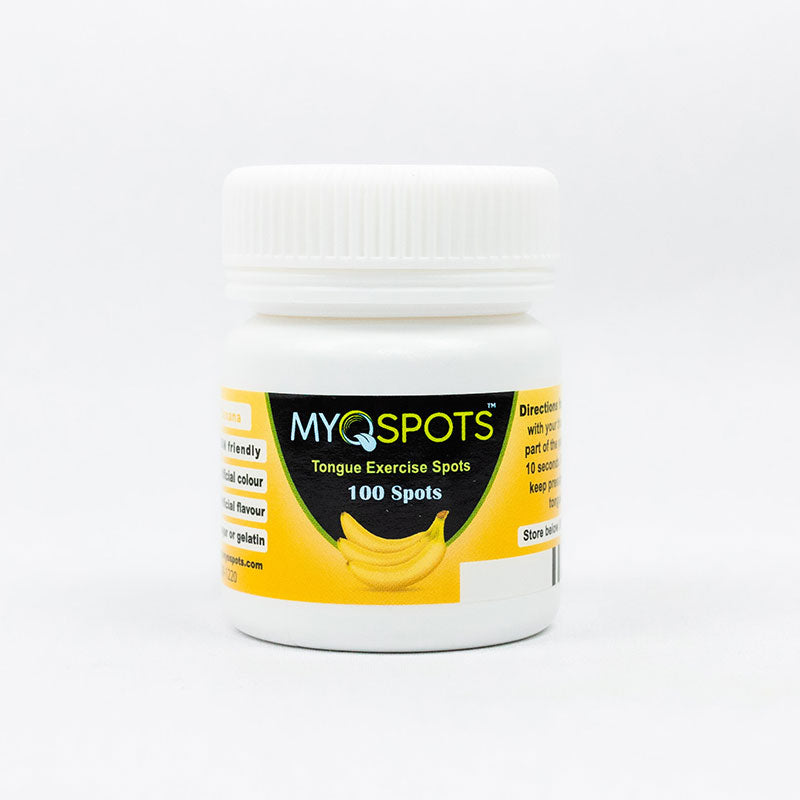
 Myospots In Banana FlavourMyospots In Banana Flavour
Myospots In Banana FlavourMyospots In Banana Flavour- Regular price
-
$55.00 AUD - Regular price
-
- Sale price
-
$55.00 AUD
-
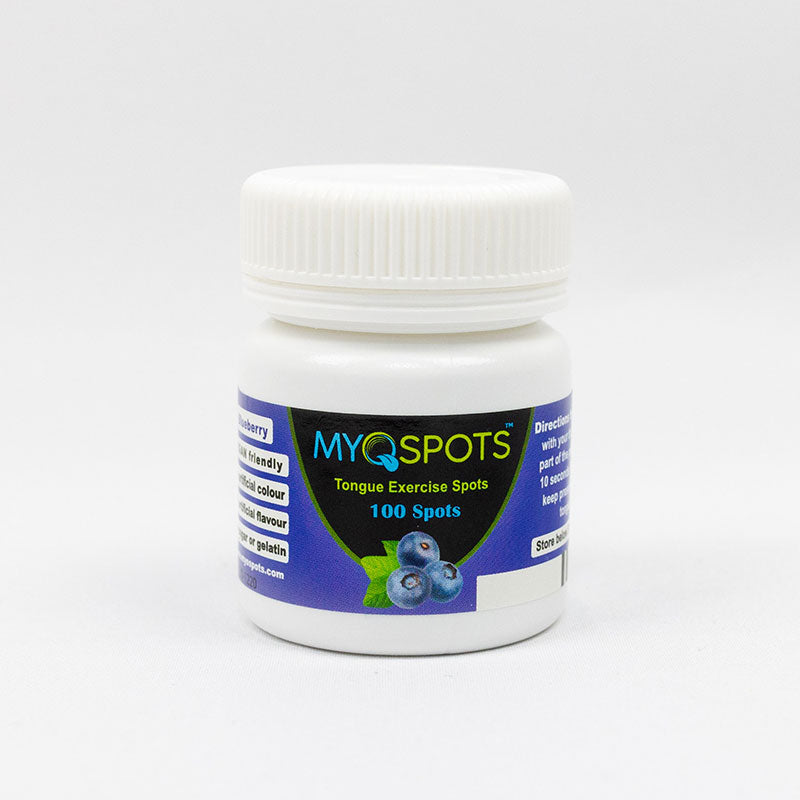
 Myospots In Blueberry FlavourMyospots In Blueberry Flavour
Myospots In Blueberry FlavourMyospots In Blueberry Flavour- Regular price
-
$55.00 AUD - Regular price
-
- Sale price
-
$55.00 AUD
-

 Myospots In Strawberry FlavourMyospots In Strawberry Flavour
Myospots In Strawberry FlavourMyospots In Strawberry Flavour- Regular price
-
$55.00 AUD - Regular price
-
- Sale price
-
$55.00 AUD
-
 Myospots In Multiple FlavoursMyospots In Multiple Flavours
Myospots In Multiple FlavoursMyospots In Multiple Flavours- Regular price
-
$33.00 AUD - Regular price
-
- Sale price
-
$33.00 AUD
-
 Myospots Lip TapeMyospots Lip Tape
Myospots Lip TapeMyospots Lip Tape- Regular price
-
$25.00 AUD - Regular price
-
- Sale price
-
$25.00 AUD
-

 Myospots Nasal StripsMyospots Nasal Strips
Myospots Nasal StripsMyospots Nasal Strips- Regular price
-
$25.00 AUD - Regular price
-
- Sale price
-
$25.00 AUD















